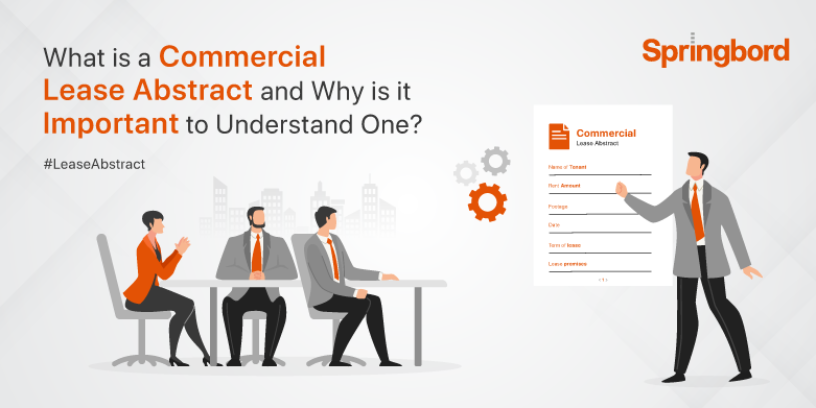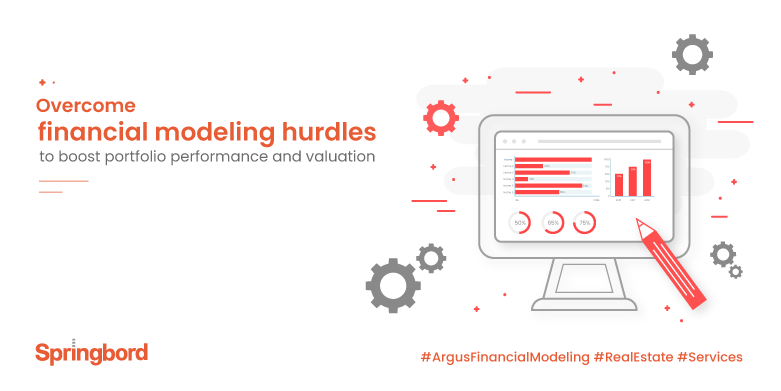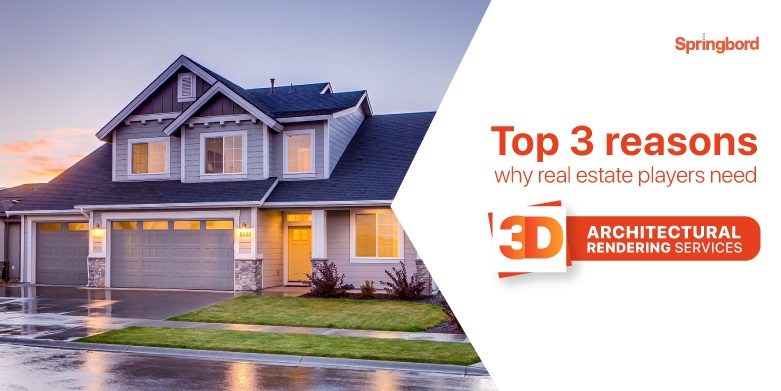 Read time 4 min
Read time 4 minAgreements for commercial leases are often long and difficult to understand. It can be time-consuming and challenging to extract important information from a lease. An abstract of a lease is a condensed, easy-to-read version of the full lease. It also organizes the original, lengthy lease paperwork for quick and easy reference. A commercial lease abstract highlights the most important aspects of the agreement, such as the financials, legal, and business dealings between tenants, landlords, and investors. Inaccuracies, inconsistencies, and missing data in a lease abstract can all be major hindrances to making a well-informed choice.
Commercial real estate lease abstraction can be presented in a variety of ways and styles for different investors, but they invariably include the following information.
Name of Tenant: The renter’s legal name as it appears in the lease.
Rent Amount: The total amount of rent due from the renter, including any increases.
Footage: The leased space’s square footage is a measure of its overall footprint.
Date: Dates include the date the lease is signed, the start date of the lease term, the date rent payment obligations begin for the tenant and the end date of the lease period.
Term of lease: Specifying the length of the lease agreement. One such range is from January 1, 2020, to December 31, 2030.
Lease premises: The term “leased premises” refers to the specified area that the tenant is allowed to use during the term of the lease.
Permitted Usage: This section specifies the kinds of activities that can be carried out at the property. It is usual practice, for instance, for leases to expressly forbid the conduct of any illegal activities on the part of the renter.
Parking Spaces: A breakdown of how many parking spots are included in the lease for the tenant’s use.
Repairs: The abstract should detail who is liable for making and paying for any necessary repairs.
Co-tenancy: If the lease allows co-tenancy, that fact should be emphasized in the summary.
Sublease: If a tenant has the option to sublease some or all of their space, this is known as subleasing. The lease summary should specify this provision if it exists.
Option to Expand: If additional space becomes available in the same building, the tenant has the right to negotiate a lease for that space. Their “expansion rights” in the lease may provide them with the opportunity before anyone else. The abstract is the place to include this data.
Exclusivity: The abstract also has to specify whether or not the lease is assignable and whether or not it is exclusive.
Estoppel: An estoppel is a formal record that details all of the due and unpaid assessments of a company or organization.
One of a company’s major costs is rent or mortgage payments on property it owns. While internal resources may be able to manage a small number of properties, a growing portfolio of real estate can place a significant strain on those resources. If executed properly, commercial lease abstraction companies can provide essential portfolio management and the added benefit of insight into the portfolio’s impact on a company.
The commercial lease administration services provided by Springbord let companies contract out the arduous task of leasing abstraction to trained personnel, saving money in the long run. Our seasoned personnel function as integral members of the client’s in-house team, keeping tabs on the finer points of leases so that the customer may concentrate on other aspects of running their business.
For abstraction, we use our software, but we may also perform the process manually if necessary. Our team can provide custom commercial lease abstract templates and leverage commercial lease abstract software to ensure accuracy and consistency across all lease abstracts. The high-quality abstracts we produce make it a breeze to take care of the rented property. With the business lease administration services team, the client can choose from a list of more than two hundred elements to have abstracted. We also create a whole new, custom-tailored template for each customer to ensure we’re always exceeding their wildest dreams.
Conclusion
Lease abstraction is offered by Springbord as an alternative to the initial execution or as a stand-alone project with no sacrifice in quality.
Springbord is the best option if you need a dependable collaborator on any task, including commercial lease abstraction services or lease administration services. Team up with us, and we’ll put a halt to all those pesky add-on fees!
FAQs
Q: What is a Commercial Lease Abstraction?
Commercial lease abstraction is the process of extracting and organizing essential lease details—such as key terms, financial responsibilities, and parties’ information—into a streamlined, easy-to-read summary known as a lease abstract.
Q: What is a Commercial Lease Abstract Template?
A commercial lease abstract template is a standardized document format used to summarize key lease details, ensuring consistency and easy access to essential terms across multiple lease agreements.
Q: Why is Commercial Lease Abstraction Important?
Commercial lease abstraction is important because it simplifies lease management by consolidating crucial information, helping stakeholders make informed decisions and enhancing portfolio efficiency.
Q: How Does Commercial Lease Abstract Software Improve Efficiency?
Commercial lease abstract software streamlines the lease abstraction process by automating data extraction, reducing time, minimizing errors, and supporting efficient lease management for large portfolios.
Q: Who Should Use Commercial Lease Abstraction Services?
Commercial lease abstraction services are ideal for property managers, landlords, and companies with extensive lease portfolios, offering organized, accessible data to improve lease oversight and decision-making.







